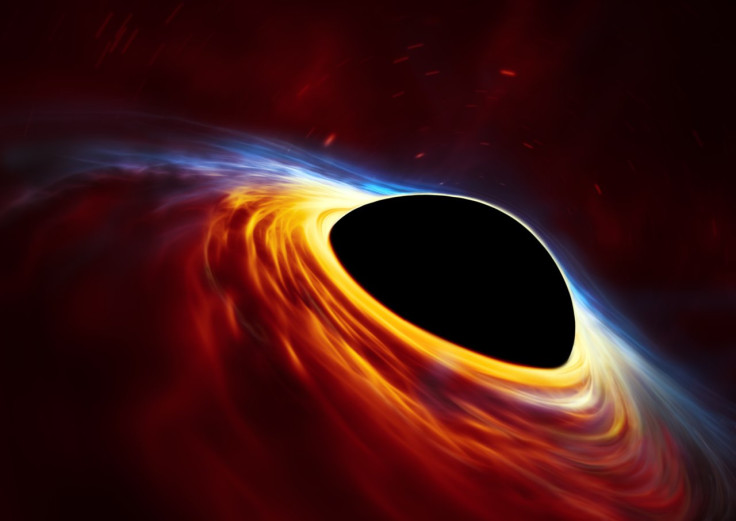Mystery of what caused brightest flash in the universe solved – and it wasn't a supernova
The 'superflash' ASASSN-15lh was caused by a very rare event involving a supermassive black hole.
The brightest flash in the universe measured so far – known as ASASSN-15lh – was thought to be caused by an extremely bright supernova, but it was actually a supermassive black hole ripping apart a nearby star, scientists say.
ASASSN-15lh was a 'superflash' that was caught by a small telescope on 14 June 2015. Most of the brightest known events are caused by supernovae, which happen when large stars run out of fuel at the end of their life cycle. They are often so bright that they can outshine an entire galaxy.
But ASASSN-15lh was twice as bright as the brightest supernova on record. Scientists first thought it was just a huge supernova, but a paper published in the journal Nature Astronomy now finds it was caused by a much rarer event.
It was a supermassive black hole at the centre of a distant galaxy that caught the star within its tidal radius – at this distance the star begins to be torn apart by the gravitational pull of the black hole. If the star falls too close, however, it passes its event horizon and the destruction of the star would be invisible.
This is known as a tidal-disruption event and it is only possible in a spinning black hole. If the black hole spins then the tidal radius falls outside the event horizon. For a black hole that is not spinning, the tidal radius falls within the event horizon and so the destruction of the star would not be visible.
There were several clues that didn't quite fit with the supernova theory for the superflash, study author Giorgos Leloudas at the Weizmann Institute of Science in Israel told IBTimes UK.
During a tidal-disruption event the debris from the star as it is torn apart collides and a build up of heat causes an extremely intense flash of light.

The first clue that this was a tidal-disruption event and not a supernova was the nature of the spectrum of light emitted by the star, which didn't fit the profile of an ordinary supernova. Second, it happened in an old galaxy rather than a young one, where most supernovae tend to happen.
The final clue was that the temperature of the event cooled a little initially – as you would expect from expanding mass of debris from a supernova – but then it got brighter and hotter again.
"The re-brightening event is something that we have not seen before in a supernova, at least not to this extent," Leloudas says. "Here we're talking about something very dramatic."
"A standard supernova is an expanding ball of gas – so as it expands it cools down, and so temperature goes down with time. In this case we see the temperature going up again and staying constant for hundreds of days."
As the destruction of a star at the edge of a supermassive black hole is such a rare event, little is known about them so far, and there are still many questions to be answered about events such as ASASSN-15lh, Leloudas says.

© Copyright IBTimes 2025. All rights reserved.






















